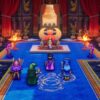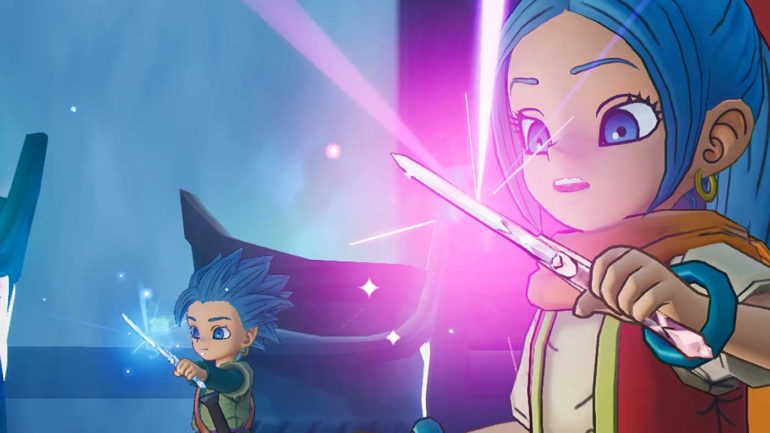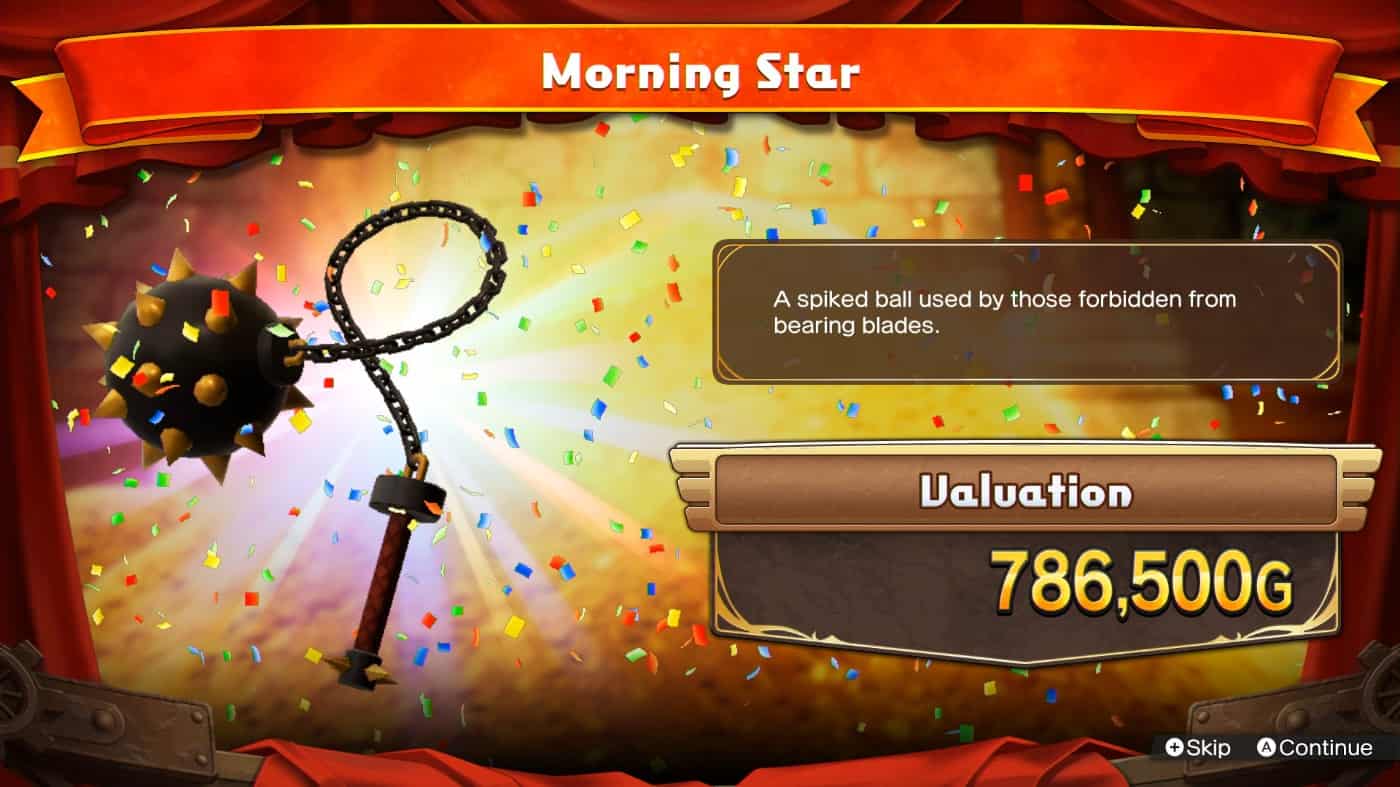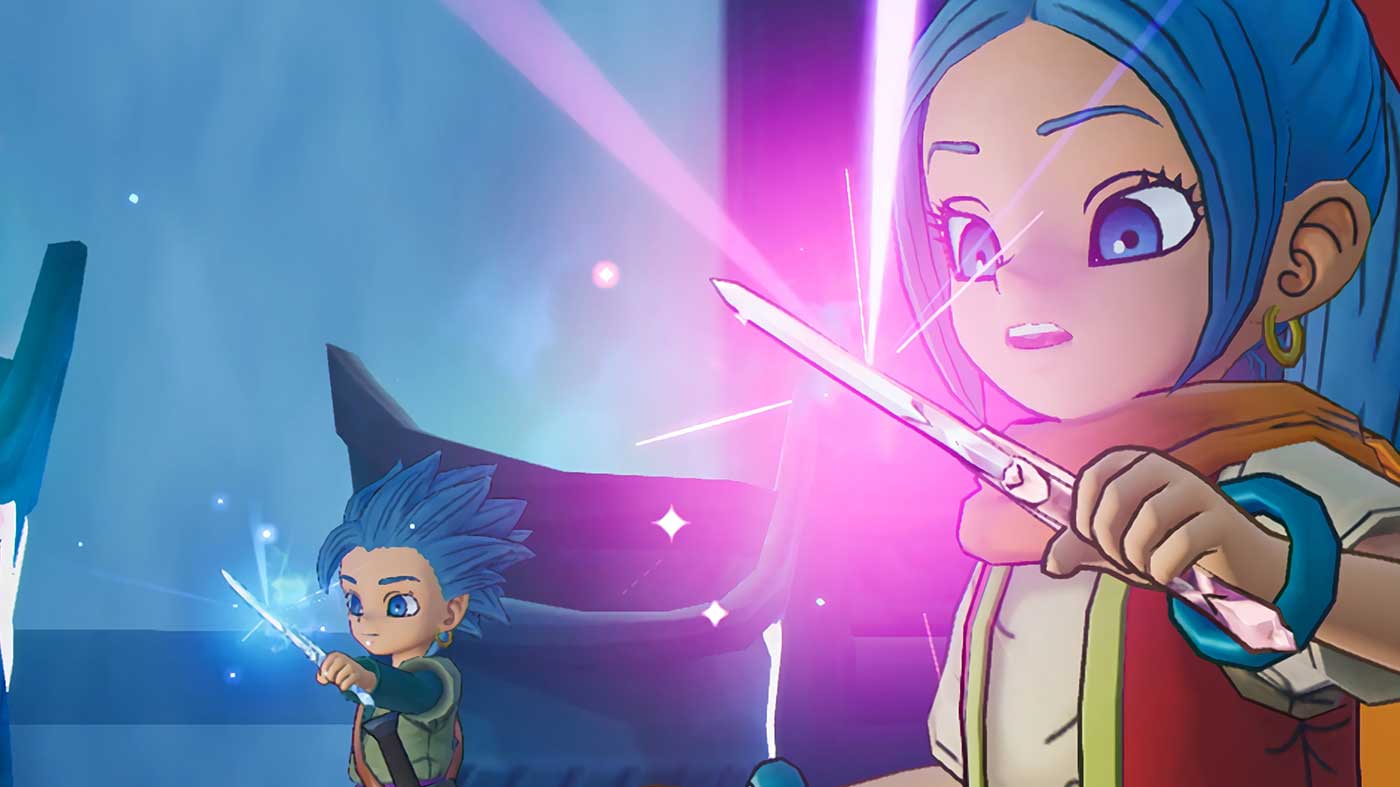With 11 mainline entries, countless spin-offs, and worldwide success, there are few franchises with a legacy similar to that of Dragon Quest’s. More than 35 years after the original’s release in Japan, Dragon Quest Treasures is more proof that the series is far from dead, presenting an experience that while far less complex than its predecessors, echoes the inherent comfort and tantalizing allure of a Dragon Quest game. It’s a markedly different experience in comparison to anything that’s come before, with a stark focus on treasure hunting and spending time with your monster buddies in what can only be described as fantasy bliss.
Serving as a prequel to Dragon Quest XI: Echoes of an Elusive Age, Dragon Quest Treasures follows fan favorite character Erik, and his younger sister Mia as they seek to satiate their thirsts for adventure after running from the Vikings that took them in as their own. Their escapades see the pair encountering a pair of magical creatures, and are shortly whisked away to a mythical land known as Draconia. Much to their surprise, Draconia is positively stuffed with legendary treasure to find, so the two decide to partake in the adventure they so desperately crave while trying to find a way back home.
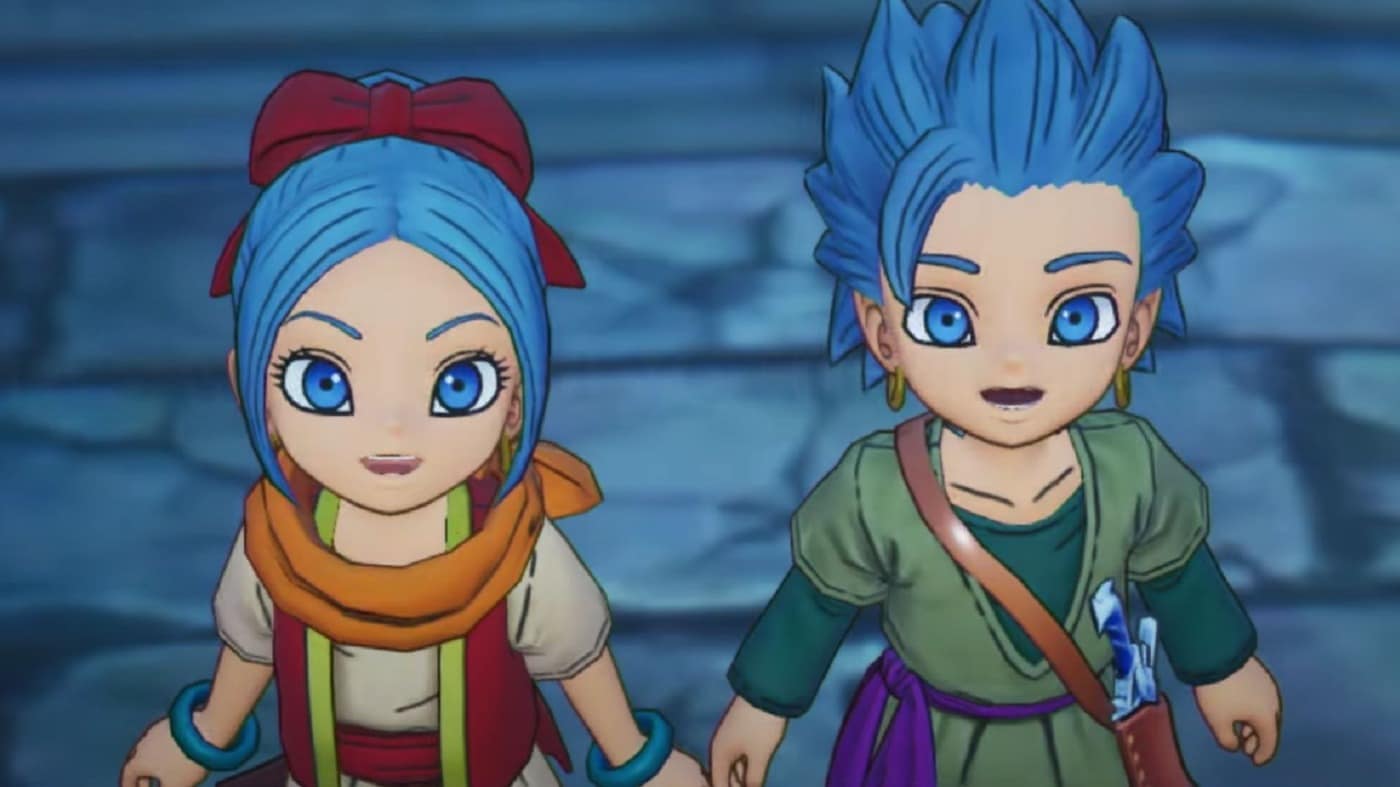
After being bestowed with a pair of magical Dragon Daggers, you set out across Draconia to hunt down the seven legendary Dragon Stones while building up your own faction of treasure hunters. It’s a remarkably simple yet heartwarming premise that never jumps the shark in ambition or stakes. It makes for a straightforward plot that despite lacking tons of depth, more than makes up for it in providing a cozy adventure that’s reminiscent of fantasies you’d make up in your head as a child. This is perhaps intentional given some of the narrative implications surrounding the true nature of Draconia, but to spoil that here would be a shame for those who love Erik as a character.
The gameplay loop is similarly straightforward, lacking the depth and complexity typically found underneath the surface of a mainline game, poising itself as less of an RPG and more of an exploration game. After a relatively slow opening few hours of tutorials, you’re let loose on the five islands of Draconia with the main objective of hunting for the seven Dragon Stones. You’re given a hint for each one at the outset, but these are cryptic and confusing by nature, and you’ll quickly find out that you’ll collect them over the course of the game as you learn more about their locations.
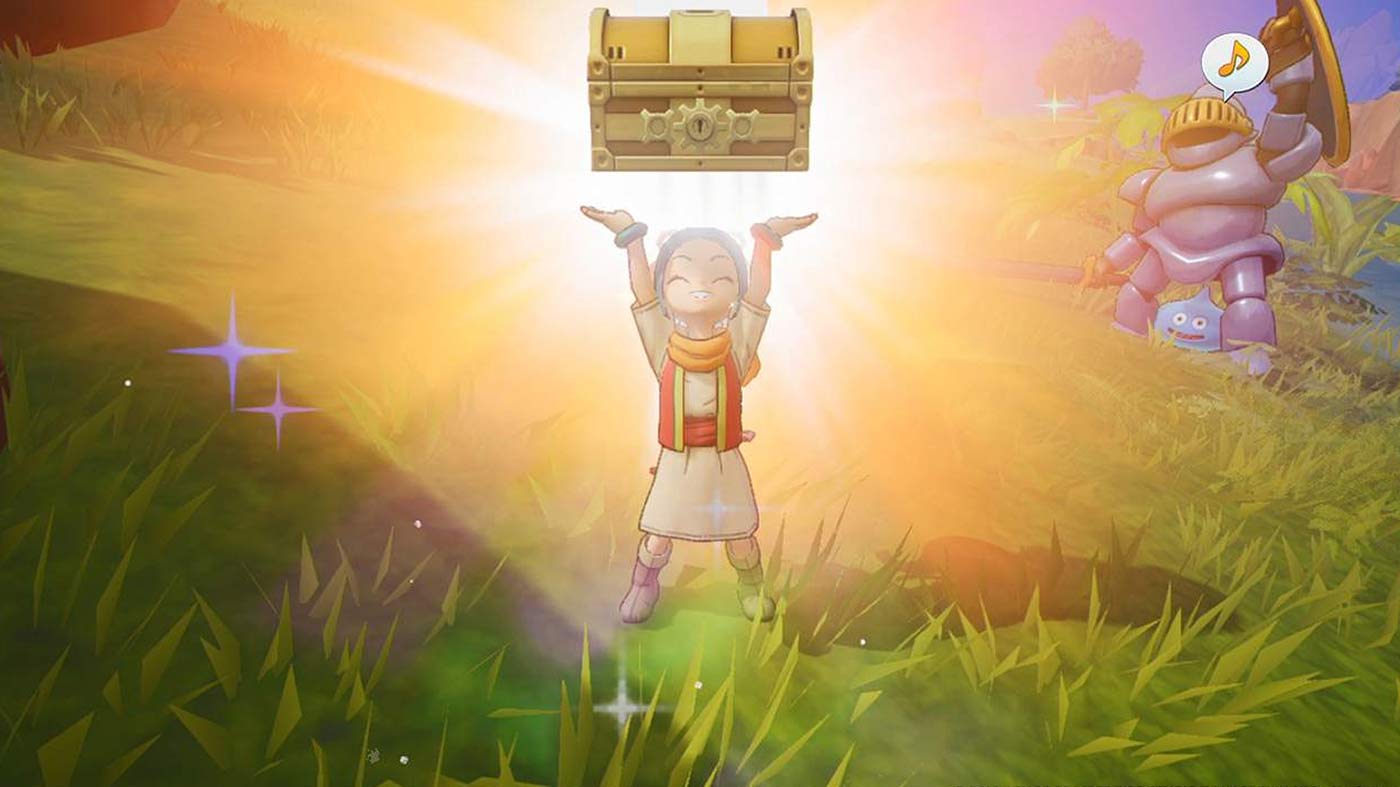
This means that for those who really want the thrill of hunting treasure with only the slightest hint of direction, you can comb through every nook and cranny of Draconia, looking for similarities between the landscape and clues you’re given. Otherwise, growing your base, collecting more treasure, and expanding your gang will lead to new levels of the Snarl being unearthed. The Snarl is a dungeon within your base of operations that give you a more specific idea as to the location of the Dragon Stones upon clearing combat challenges on each of its floors. It’s a genius way to go about the main treasure hunt at large, and ensures that the player is always in control.
THE CHEAPEST COPY: $79 WITH FREE DELIVERY FROM AMAZON
While everything built around the hunt for the Dragon Stones seems tangential at first, its slowly revealed that every system at play in Dragon Quest Treasures loops back into that core objective. Things like finding treasure in the wild, befriending monsters to bring with you on expeditions, or restoring the Trans-Draconic Railway Company to its former glory all contribute to the larger goal of expanding your faction’s reach. It means that whenever you set out on an expedition, there’s always something for you to do that has a meaningful impact on core objectives, making for an addictive “just one more thing” style of gameplay loop that makes Treasures very hard to put down.
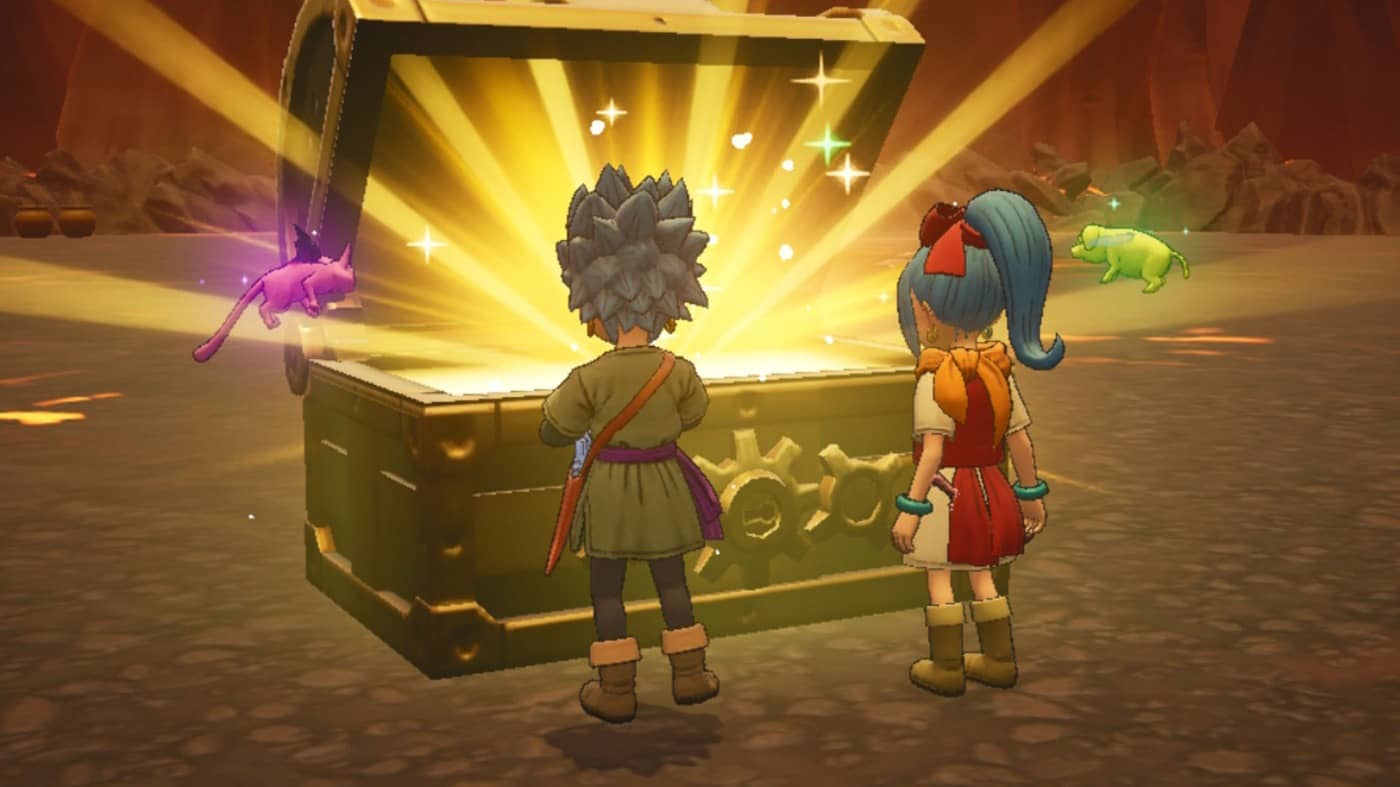
A large part of this also comes down to how easy it is to engage in treasure hunting. When you set out on an expedition from home base, the Treasure Forecast gives you an idea on the likelihood of finding treasure on any given island. The party of monsters you bring with you will detect hidden treasure when you’re close to it, pointing you in the right direction via the compass. Once in the immediate area, you can scan again to get a snapshot of the treasure’s location from each of your monsters, and it’s down to you to find and unearth it. Each monster can only carry a certain amount of treasure, so each expedition is limited by carry capacities.
The longer you spend in the field, though, the more you put yourself at risk both inside and outside of combat. Higher level enemies will not hesitate to make quick work of your team, and Erik falling in battle results in a total loss of all collected treasure. You’ll also eventually be introduced to Rival Gangs, who attack your team and attempt to steal your treasure. There’s plenty of tools you can use to avoid both of these things, but proper party management, and understanding when to head back to base is of paramount importance, and makes for an exciting degree of risk versus reward. The reward? Watching the value of your vault go up as a multi-million dollar treasure gets appraised in complete euphoria.
Curating a party to take with you on an expedition isn’t such a straightforward process either, as each one offers unique stats, elemental affinities, and most importantly – Fortes. Fortes are traversal abilities that make exploring the islands of Draconia much more manageable, from things like springing off of a Slime to hanging off of the bottom of a Dracky. There are more Fortes than there are party slots, though, so thinking about what types of traversal you’ll need to effectively get around is a fun bit of strategy and organization to think about before you depart.
Recruiting new monsters then becomes an equally important part of the game outside of expeditions. As you fight monsters in combat, there’s a chance they’ll be impressed by your abilities and head to your base of operations for recruitment. Providing the necessary materials will have that monster join your barracks as an option to include in your party going forward.
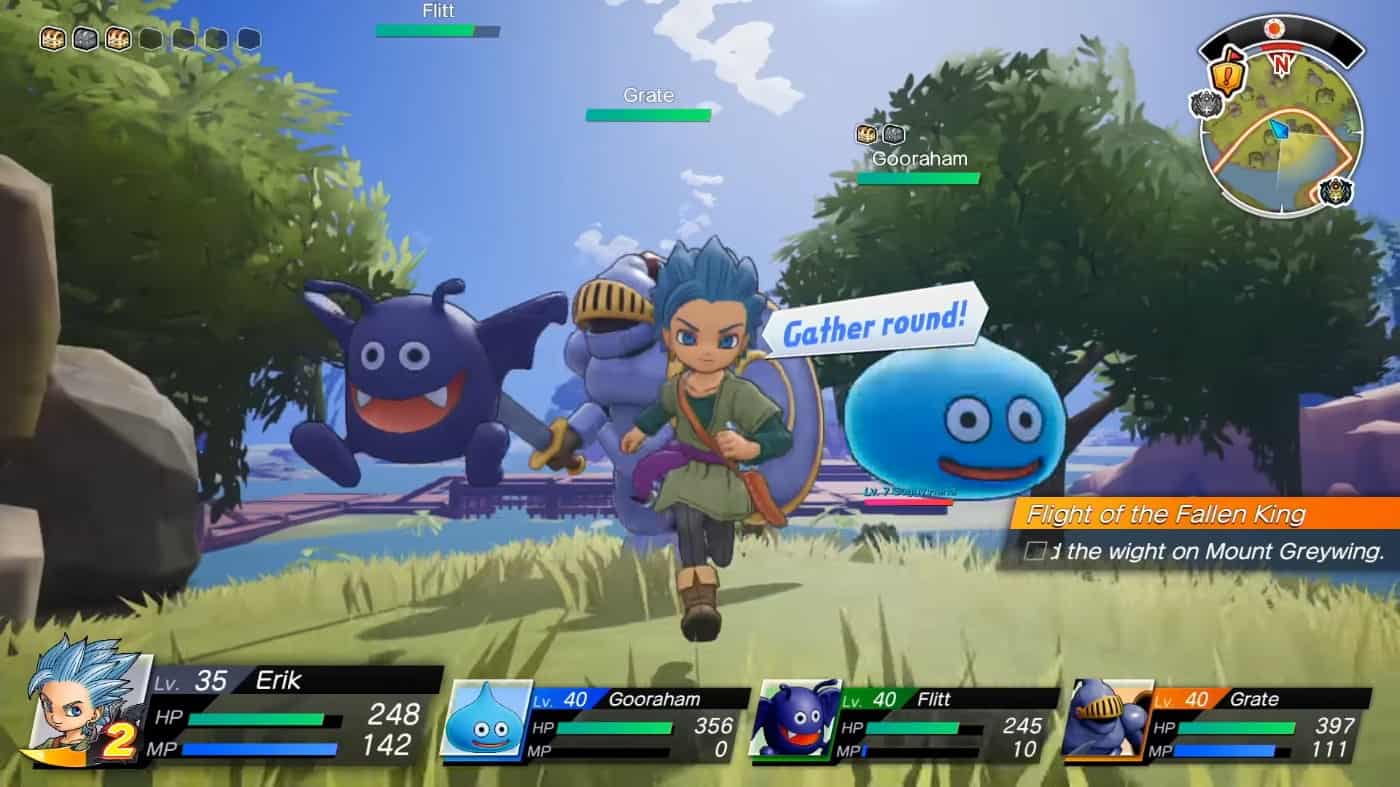
One disappointing aspect of this system is that there’s a decidedly slim roster of monsters to choose from here. While all in all there’s a large number of “unique” monsters, a vast majority of these are recolored variants, with a grand total that amounts to only 16 truly unique monster types. Given the short length of the game, this isn’t a problem that devolves into repetition or monotony, but given Dragon Quest’s expansive roster of creatures, it’s hard not to feel like there should be more here.
Combat itself is also another pain-point due to its overly simplistic and repetitive nature. You only ever have direct control over Mia and Erik, with limited commands to issue to your actual party, that for the most part, fight autonomously and will often get hit by area-of-effect attacks despite your best efforts to pull them away. As Erik or Mia, you have access to a simple dagger combo, the slingshot-like catapult, and Dragon Attacks, meaning there isn’t much flexibility in terms of approaching combat encounters.
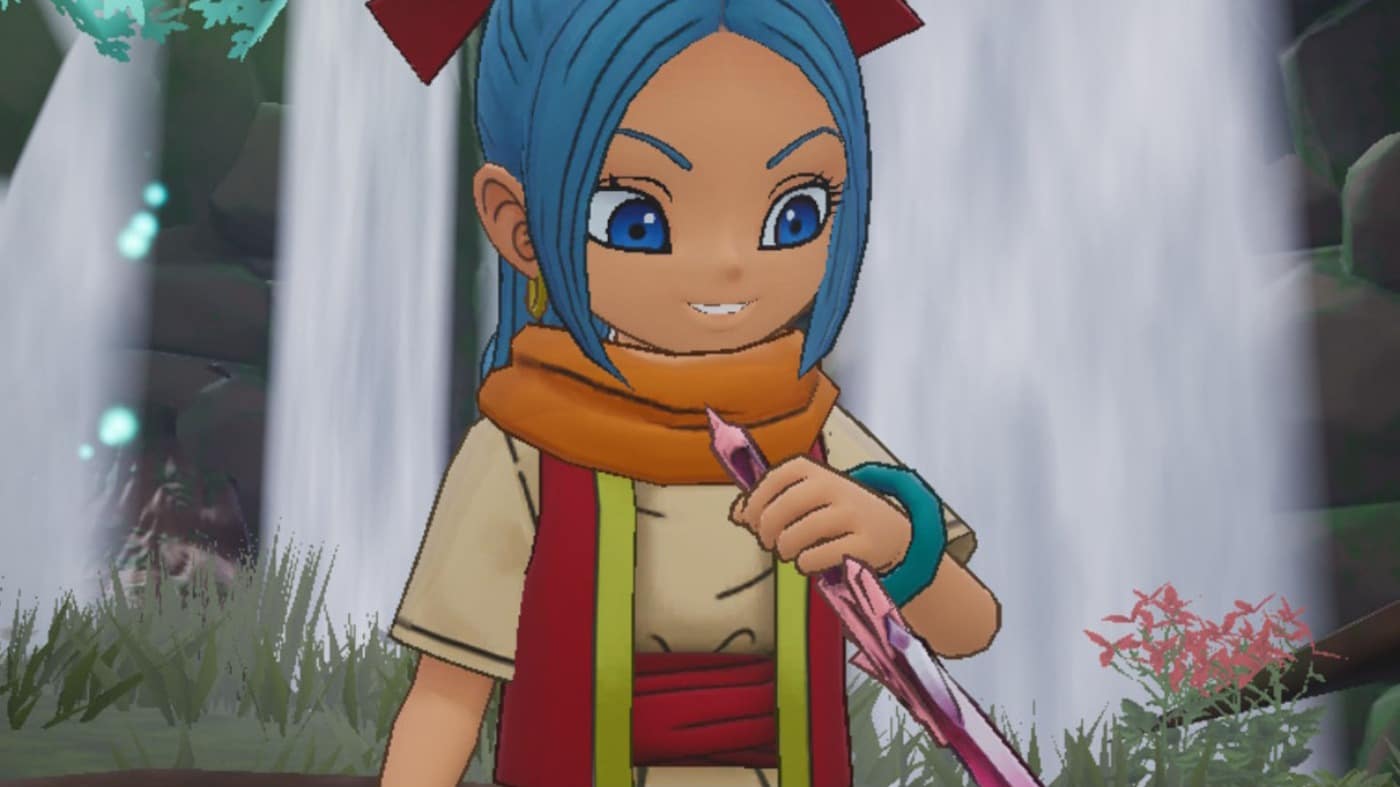
You’ll often just hack away at enemies, throw out the occasional screen-wiping Dragon Attack, and fire off some pellets for good measure. There is a bit of choice in the way you can use different pellets to exploit elemental weaknesses, but that’s the full extent of it. Combat is at its best in the few boss encounters Dragon Quest Treasures throws at you, where you also have to consider environmental hazards and more overbearing attacks as you dodge and weave through strikes to find an opening. While these encounters serve up a nice break from general combat, they make up a very small portion of the experience overall.
Between expeditions, you’ll spend time at your home base where you can swap between Erik and Mia as playable characters, explore the Snarl, and engage with numerous facilities. Aside from monster recruiting, you can also buy and craft catapult pellets, create food to use in the field for buffs, and send out parties of unused monsters to search for resources and treasure while you’re out on your own. Perhaps most important, is the vault room, where you can display your most valuable treasure on plinths, showing off the riches you’ve amassed from Draconia. It’s a space that feels lived in and real, and it’s always a joy to return to the quirky monsters that inhabit it.
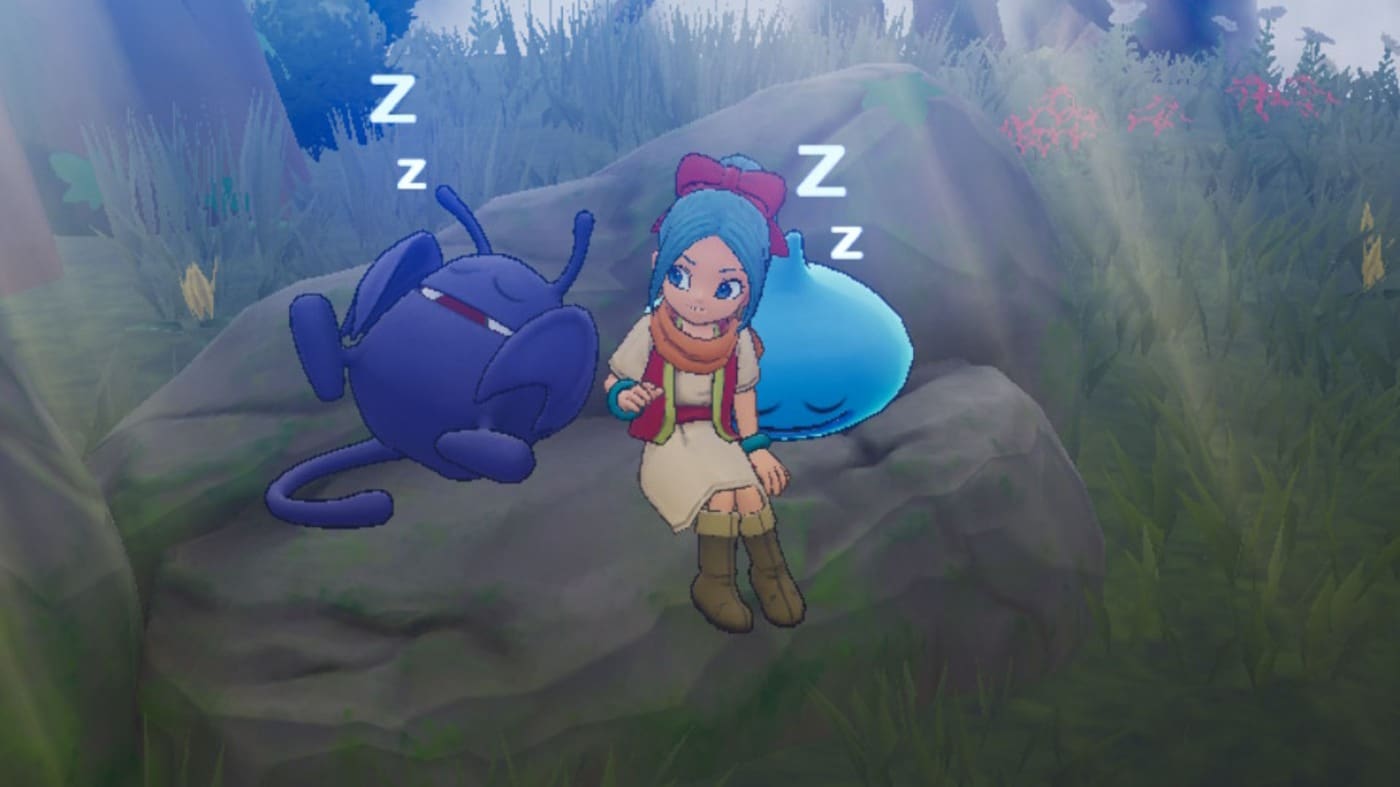
As a Switch exclusive, Dragon Quest Treasures doesn’t have the same visual allure of Dragon Quest XI, or even Builders for that matter. It’s by no means bad, a lot of the monsters and character models are nicely detailed and brought to life with personality-fuelled animation, but a lot of the environmental design is held back by muddied texture work. Fortunately, performance was incredibly consistent across my roughly 9 hour playthrough, but it certainly would’ve been nice to get further lost in this world with more defined and immersive visual fidelity, especially with how varied each island of Draconia is.
While Dragon Quest Treasures might not reach the same heights as the Builders series, there’s a distinct identity and unique experience on offer here that any fan of Dragon Quest should look into. It retains the same comfort and nostalgia of a mainline entry with an adventure that’s as wholesome as it is simple in premise. It’s a shame that the franchise’s legacy with combat and monster variety isn’t translated here, but Dragon Quest Treasures offers a relaxing and enticing adventure in its own way.
